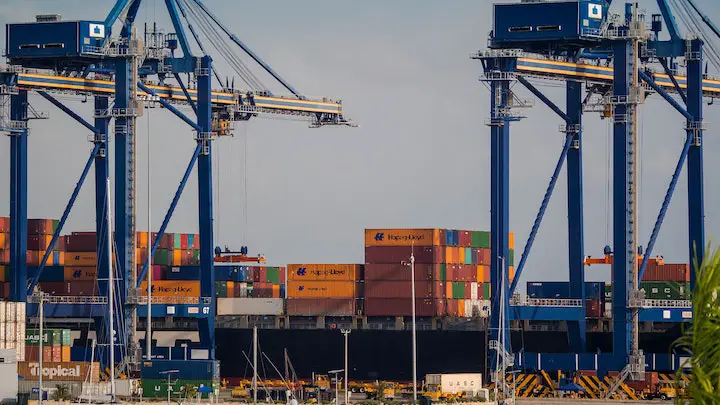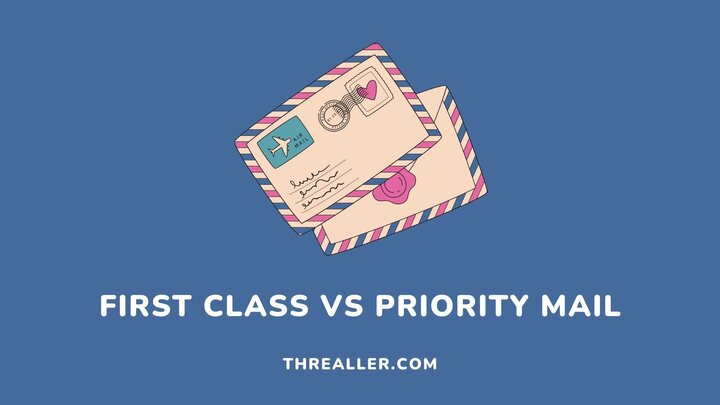When shipping mail with USPS, the two most economical options are First Class and Priority Mail. Both options are similar in many ways except for weight and other features. For example, they feature delivery confirmation and signature tracking for extra costs.
However, First Class Mail works for shipments weighing less than 1 lb. Anything heavier has to be shipped as Priority mail, Standard Parcel, or Express. Priority mail also requires an insurance fee.
While it can be confusing to determine which service is best for you, this guide will help you understand how both USPS services differ. These distinguishing factors will also make decision-making easier.
What is USPS First Class Mail?
USPS First Class Mail is a shipping service for letters, thick or padded envelopes, and other lightweight packages. Aside from this shipping option, USPS offers:
- Second Class Mail: For shipping newspapers, magazines, periodicals, and newspapers that undergo printing more than four times a year.
- Third Class Mail: For marketing mail, mailers, and fliers, to name a few.
- Fourth Class Mail: For Media Mail such as vinyl records, DVDs, books, and bound print media consisting of at least eight pages.
What is USPS Priority Mail?
USPS Priority Mail is a First Class Mail with extra capabilities. It can ship heavier packages and guarantees a faster delivery than First Class Mail.
While it is more expensive than First Class Mail, it is cheaper than similar services offered by UPS and FedEx (for packages weighing below 10 lbs). Other categories under USPS Priority Mail include:
- Priority Mail Express: This is USPS’s fastest shipping service. It includes tracking, insurance, and delivery confirmation. While its delivery time usually varies depending on the consignee’s location, most shipments arrive within two days.
- Priority Mail Parcels: This USPS service offers flat-rate pricing based on the shipment’s weight, shape, and size. Ideally, it can allow up to 70 lbs and does not feature compulsory payment for signature confirmation or insurance.
- Priority Mail International Parcels: This is an economical way to ship lightweight packages overseas via airmail. The service is available in over 190 countries and allows parcels weighing up to 4 pounds.
Differences between First Class and Priority Mail

First Class and Priority Mail can both handle parcels and packages. They also possess similar features but different capabilities.
Here is a rundown of how First Class and Priority Mail differ:
1. Shipment size
Shipment size represents the primary difference between First Class and Priority Mail. The former only allows packages with a maximum dimension (combined length and girth or thickness) of 108″ and a weight of 0.9 lb.
Priority Mail, on the other hand, can accept a package with a similar dimension but does more in terms of weight. Shipments weighing up to 70 lbs can be shipped via this service. In other words, Priority Mail is more suitable for heavier packages.
2. Cost of shipping
You only need about $0.63 for First Class Mail. The shipment fee for Priority Mail is usually higher. Depending on your shipping option, it ranges from $7.64 to $28.5.
3. Insurance policies
Another distinguishing factor is how insurance applies to First Class and Priority Mail. Unlike Priority Mail, First Class Mail does not feature default insurance. Therefore, the sender is not covered if First Class shipment gets lost or damaged during transit.
They have to provide a replacement and repeat paperwork procedures. Fortunately, this can be avoided by paying special insurance coverage for the package. How much you end up paying will depend on the package.
Priority Mail, on the other hand, features a default insurance policy. This usually ranges from $50 or more, depending on the shipment.
If your package is lightweight but expensive, it is best to opt for First Class Mail and pay extra for insurance or choose Priority Mail altogether.
4. Delivery turnaround
First Class and Priority Mail often deliver their package within 2 to 3 days. However, if your package is time-bound, Priority Mail is the better option for domestic and international shipments.
5. Tracking
First Class Mail service will only feature tracking for an extra fee. On the other hand, Priority Mail comes with free tracking.
6. Flat rate option
First Class does not offer a flat-rate option like Priority Mail. With the Priority Mail Flat Rate packaging, you can ship parcels for a fixed cost regardless of their weight.
7. International shipping
Priority Mail services are the best option for international shipment because of the additional features like insurance and tracking they offer. First Class Mail may not be the best for International shipments because of their size or weight limitation and slower turnaround.
Can You Use Priority Mail Envelope for First Class Mail?
This is not advisable because the Priority Mail packaging provided must be used only for Priority Mail. Trying to reconfigure or mask their markings will not change the fact that it will be charged the appropriate Priority Mail postage.
FAQs
Can First Class Mail take seven days?
Yes, but this is often due to unforeseen circumstances. The ideal turnaround for First Class mail is between 1 to 5 days.
Is First Class Mail bad?
First Class Mail is not bad. It is an excellent option for letters, postcards, and other lightweight packages which are not time-bound.
How fast is USPS Priority Mail Express?
USPS Priority Mail Express provides 24-hour and 48-hour delivery services with a money-back guarantee.
Deciding between First Class and Priority Mail
Choosing between First Class and Priority Mail usually comes down to a few factors and preferences. If your package is lightweight and not so expensive, First Class Mail is the ideal option. Examples of such packages include postcards, brochures, and letters.
However, if your shipment is precious and time-bound, Priority Mail is the better option. You’ll enjoy free tracking and insurance for shipments like expensive wristwatches and tubes.
I hope you found this guide helpful. If you are interested in how RVers or people with no permanent address receive mail, please see my guide on USPS General Delivery.
Thanks for reading.
